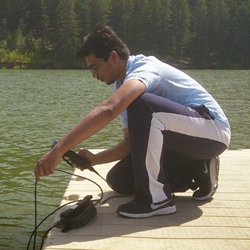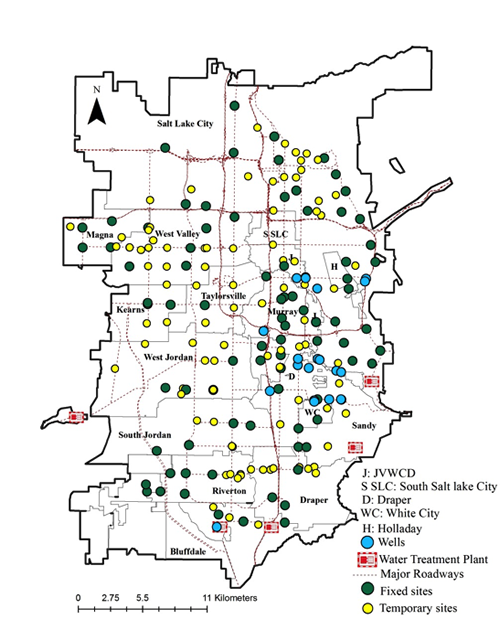News Article
July 27, 2015
Insights into the urban water dynamics of Utah
 Public water supply systems are the life-blood of urban areas. How we use urban water systems affects more than human health and well-being. Our water use can alter a city’s energy balance, including how much solar energy is absorbed as heat or reflected back into space. It affects relationships among all living things within the city, and flows of water and natural chemicals through it. The severity of these effects, and the need to better understand connections between climate, water extraction, water use, and water use impacts, is strongest in dry climates and places undergoing substantial land-use change – for example, the rapidly urbanizing areas of Utah that are the focus of the iUTAH program.
Public water supply systems are the life-blood of urban areas. How we use urban water systems affects more than human health and well-being. Our water use can alter a city’s energy balance, including how much solar energy is absorbed as heat or reflected back into space. It affects relationships among all living things within the city, and flows of water and natural chemicals through it. The severity of these effects, and the need to better understand connections between climate, water extraction, water use, and water use impacts, is strongest in dry climates and places undergoing substantial land-use change – for example, the rapidly urbanizing areas of Utah that are the focus of the iUTAH program.
Studying the water’s “isotopic composition” – that is, the number and relative abundance of different isotope forms of common elements – can help us better understand these connections. University of Utah researcher Gabe Bowen and his PhD student, Yusuf Jameel, are studying how the isotopic composition of tap water in the Salt Lake Valley varies over space and time. With support from iUTAH, the group has gathered and analyzed stable water isotope data from a series of semi-annual hydrological surveys (spring and fall, 2013 and 2014) in urban tap water sampled across the Salt Lake Valley.
Their study has led to four major findings thus far: 1) Clear and substantial variation in tap water isotopic composition in space and time can be linked to different water sources and management practices within the urban area, 2) There is a strong correlation between the range of observed isotope values and the population of water districts, reflecting use of water from multiple local and non-local sources in districts with high water demand, 3) Water isotopes reflect significant and variable loss of water due to evaporation of surface water resources and 4) Overall, tap water contains lower concentrations of the heavy H and O isotopes than does rainfall within the basin, reflecting the connection between city water supplies and mountain water sources. The effect is increased as the climate grows drier and warmer.
Currently, Yusuf is writing a manuscript on his work and plans to submit it to a peer reviewed scientific journal. Gabe and Yusuf are also working with a major water supply company in the Salt Lake Valley to quantify the water loss during transmission and storage, the relative contribution from different sources of water, and transmission patterns of water in urban systems.


« Back to list of all news articles


